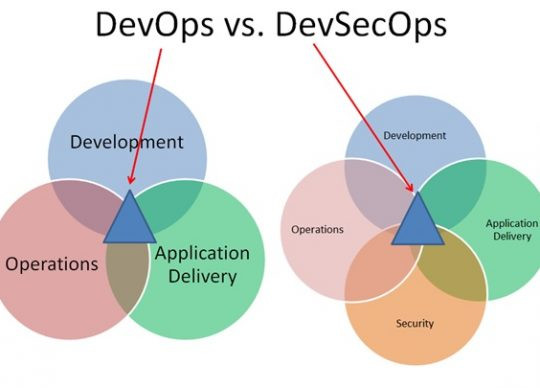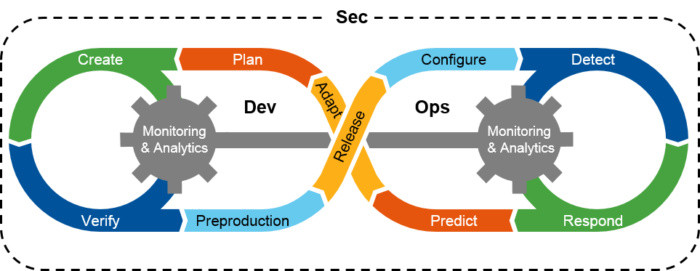
BLOG

BLOG
In today's blog post, we explore DevOps in greater depth by introducing the DevSecOps process, explaining the differences between the two methods, discussing its role in mobile application development and security, and how to implement DevSecOps in your organization.
Due to the rapid development of mobile applications and their deployment on the cloud, data protection within these apps is vital for long-term success. Security and its proper integration have become crucial at later stages and throughout the entire development stage.
In the past, an isolated security team stepped in at the final stages of app development. Companies have now realized that to take full advantage of the responsiveness and agility of DevOps, integrating IT security into the full cycle of apps is a must instead of intervening at the app's final stages.
Within the collaborative framework of DevOps, security becomes a shared responsibility that is integrated from end to end. Thus, the term DevSecOps came about to emphasize the need for a foundation of security for any app.
You'd be mistaken if you’re under the impression that the two have vast differences. The two processes don’t contradict each other. DevSecOps is the next generation of DevOps.
When the market demanded rapid innovation, DevOps was the solution. Better collaboration and high levels of automation led to shortened delivery times. However, there was still a gap between the development and security teams.
 Image Credits - Code Dx
Image Credits - Code Dx
DevSecOps bridges that gap by going one step further and integrating security measures into the development process. It combines security into the CI/CD pipeline. This enables early and continuous risk management.
The rate at which the development of applications is increasing, DevOps will not be able to stand on its own for long. Companies will need DevSecOps instead.
• With DevSecOps, there is an emphasis on DevOps automation security problems. This includes configuration management, composition analysis, selected approved images or containers, etc.
• It minimizes the weakness of IT and business cooperation.
• A high degree of security can be achieved
• You get a higher speed of workflow.
• This leads to effective overall management.

The ultimate goal of DevOps and DevSecOps is to increase a company’s ability to create and deliver quality software within the shortest time possible. With the DevSecOps approach, you aren’t waiting for the final stages of SDLC to introduce security, every stage of software development will incorporate security.
DevSecOps is essentially the automation of security checks that includes security tests like static code analysis, malware scanners, vulnerability scanners, and other tests that focus on security.
These automated checks introduced early in the process give developers access to current coding rather than something written weeks ago, making it easier for developers and the security team to be connected at all times.
With everyone being responsible for security at every stage, it is more likely that the team would flag issues, risks, or anything that could be perceived as a security threat as soon as it is identified. This will eliminate such issues being caught only later in the security review process.
Taking this approach leads to better security and improves the code's quality.
It’s advisable not to jump into the deep end of the pool when it comes to incorporating new approaches. It’s best to do it gradually so that teams can adjust within themselves and in tandem with other teams.
Read this blog to learn about Gartner-approved DevSecOps implementation hacks.
While introducing DevSecOps, training the development teams in security would help make employees aware of the current security requirements and solutions available.
You can start off by getting teams to take on additional tasks one by one. Initially, a suitable path would be to incorporate automated code scanning, pen testing, malware checking, and vulnerability scanning into the development cycle.
From here, you can scale up and start integrating security into more layers of the existing process.
Once implemented, the entire operation becomes easier, faster, and lighter on the team as security becomes part and parcel of the process.
The end goal of DevSecOps is to bring about better quality code, reduced application vulnerabilities, and better security. This helps build a trustworthy app and achieve business objectives.
.jpg?width=50&height=50&name=10606600_10204086667262761_7381430219125488912_n%20(1).jpg)
